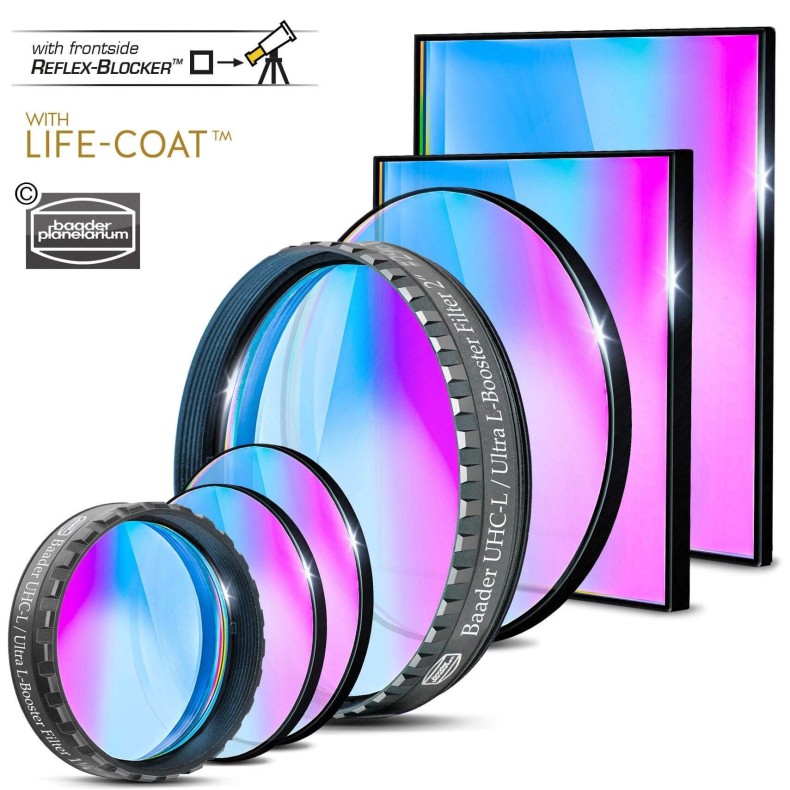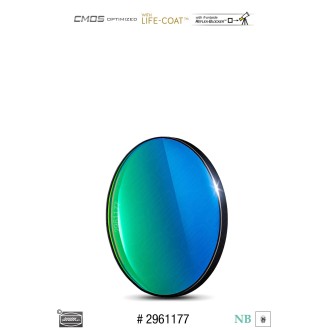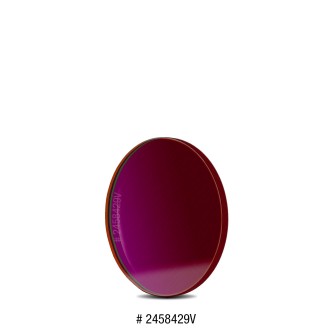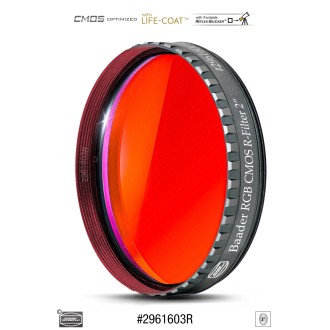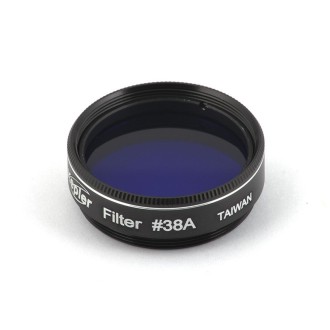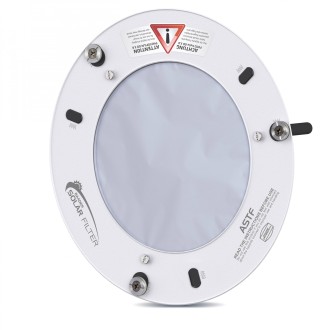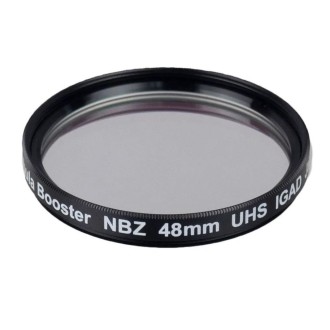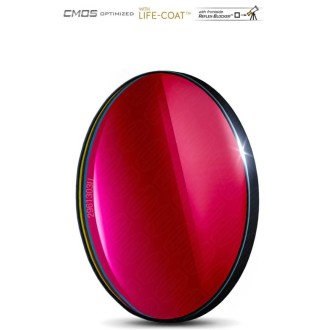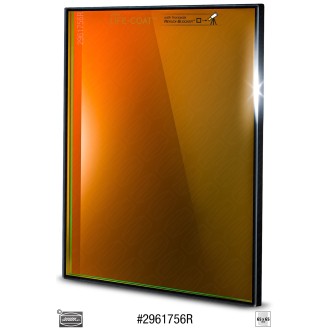Baader Ultra-L / UHC-L 65x65mm booster filter
Baader UHC-L nebula filter with highest transmission, realistic star colors, also usable as a highly effective LED-optimized luminance filter for LRGB images.
| Carrier | Description | Estimated Delivery | ||
|---|---|---|---|---|
 |
Home delivery - International | Home delivery - International |
Thursday, 8 May - Thursday, 15 May |
|

Home delivery - International
Home delivery - International
Estimated delivery:
Thursday, 8 May - Thursday, 15 May
Baader Ultra-L-Booster-Filter / UHC-L
- Maximum Transmission Visual and Photographic UHC-L Nebula Filter
- Ultra High Contrast L filter blocks city lights and enhances the contrast of nebulae and comets (C2 lines)
- Can be used as an LED-optimized luminance filter for RGB images with sky glow suppression
- Optimized blue transmission to block bluish glow caused by LED lights from cars and streetlights.
- Creates a much brighter image than a conventional Nebula filter
- Ideal for deep sky observers. This UHC-L filter is the perfect visual complement to narrow-band OIII filters.
- Hard-coated and polished plano-optical Reflex-Blocker™ - with sealed coating edges (Life-Coat™).
- Blackened edges all around, with filter-side indicator in the form of a black outer edge on the telescope side
The Baader UHC-L filter is the classic "light pollution rejection filter", but now also blocks the main LED emissions in the blue part of the spectrum. The passband curve corresponds to a wide dual-band filter without distorting the colors of the stars. The two passbands transmit all light emitted by known gaseous nebulae (the H-alpha and H-beta lines of fluorescent hydrogen as well as the OIII line of oxygen), while both the more disturbing atmospheric stray light from LED lamps and intense bluish car headlights as well as the additional stray light from classical street lamps and the natural night sky glow (airglow/skyglow) of the atmosphere are largely blocked. At the same time, the UHC-L filter is coated with the latest (CMOS-optimized) technology and therefore blocks stray light much more effectively than all previous UHC filters.
Use of the UHC-L filter
The application of the UHC-L is mainly in the visual and photographic observation of emission nebulae (star-forming regions, planetary nebulae, supernova remnants) under medium to highly polluted skies. Its use is also interesting for comet observation: It passes the OIII line at 501 nm, as well as the two C2 lines at 511 nm and 514 nm, characteristic of the gas tail of many comets.
This UHC-L filter is the successor to the proven Baader UHC-S polished plano-optical filter. Accordingly, it complements it with the advantages of CMOS optimization (no annoying halos, blackened filter edges, Life-Coat™ coating) while providing an improved transmission spectrum adapted to also cover modern LED light pollution. It provides a brighter image than many classic LPR (Light Pollution Rejection) filters and is therefore not only suitable for large and fast instruments, but also for smaller telescopes that collect less light, where a large exit pupil cannot be achieved. This applies to both long focal length telescopes and small aperture telescopes that only have an eyepiece socket for 1.25" eyepieces. Unlike narrow band filters with one or two lines, the image is also bright enough for high magnifications, without diminishing the number of stars. Therefore, for deep sky observers, this UHC-L filter is the perfect visual complement to the narrow-band OIII filters.
The UHC-L filter is also excellent for photographic use. It not only blocks contaminating terrestrial light sources, but at the same time serves as a luminance filter (L-filter), since it blocks all UV and IR transmission as a UV/IR cut-off filter. Thus, an additional UV/IR cut-off filter is not necessary: Cameras without a built-in UV/IR filter thus provide much sharper images in refracting telescopes. Both classical photographers and EAA/LiveStacking users benefit from the increased sharpness of stars and the improved contrast of nebulae as well as the improved transmittance in H-alpha.
Like all CMOS-optimized Baader filters, Baader UHC-L filters are also plano-optically polished, with ultra-hard sprayed dielectric coatings. Even a one-hour bath in boiling water cannot damage these filters. They are scratch-resistant and can be cleaned as often as desired.
The Baader UHC-L / Ultra-L-Booster filter offers all the advantages of the CMOS-optimized Baader filters:
- Higher contrast, tailored to typical CMOS quantum efficiency and s/n ratio.
- Reflex-Blocker™ coatings, for the highest absence of halos, even under the most adverse conditions regarding auxiliary optics
- Filter thickness identical to existing standards, with maximum attention to parfocality
- All-around blackened edges, with filter inlet side indicator in the form of a black front outer edge, to additionally eliminate any reflections due to light hitting the edge of a filter
- Each filter individually coated, with sealed coating edge (NOT cut out of a larger plate with coatings left exposed, read more)
- Life-Coat™: increasingly harder coatings to allow for a coating that will not age for life, even in the harshest environment
Specifications:
- Manufacturer: Baader Planetarium
- Net Weight (KG): 0.032
- Transmission Range: multiple bands (see spectral image)
- Filter Thickness (without cell): 3 mm
- AR Coating: Reflex-Blocker™ hard coated, dielectric coated, planoptically polished
- Filter size: 65x65mm
- CMOS filter usage: contrast enhancement, light pollution reduction, luminance
- Filter mounting: Not mounted
- Filter Type: Bandpass
- Single filter
- Filter Shape: Square

